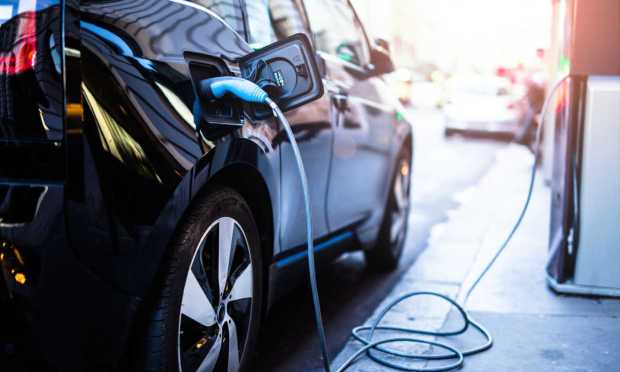
We exist in an era of various innovations transforming the world’s foundational industries.
And these advances, from artificial intelligence (AI) to quantum computing and beyond, are increasingly enjoying a compounding network effect that is turbocharging the pace of scientific discovery and technical sophistication.
They could even help solve for the fundamental infrastructure and unit economic hurdles currently hamstringing the electric vehicle (EV) transition, and help power a more efficient — and connected — future for the automotive industry.
This, as on Tuesday (Jan. 9) researchers from Microsoft and scientists at the Pacific Northwest National Laboratory (PNNL) in Washington state announced that they successfully used AI to design an industrial material that can be used to build a working battery requiring up to 70% less lithium than many competing designs.
“The development of novel batteries is an incredibly important global challenge,” said Brian Abrahamson, the chief digital officer at PNNL. “It has been a labor-intensive process. Synthesizing and testing materials at a human scale is fundamentally limiting … Recent technology advancements have opened up the opportunity to accelerate scientific discovery.”
“At every step of the simulation where I had to run a quantum chemistry calculation, instead I’m calling the machine learning model. So I still get the insight and the detailed observations that come from running the simulation, but the simulation can be up to half a million times faster,” explained Nathan Baker, product leader for Microsoft’s Azure Quantum Elements.
The new battery material was found in a matter of weeks, not years, with researchers taking 32 million potential inorganic compounds and reducing them to a list of 18 candidates in just 80 hours with AI and high-performance computing (HPC), a type of cloud-based computing that combines large numbers of computers to solve complex scientific and mathematical tasks.
Lithium-ion batteries power not just EVs but also a growing number of daily-use devices. Accelerating the to-market timeline of more efficient and cheaper versions is something the EV revolution desperately needs.
After all, AI is increasingly being integrated into every element of the connected car experience, so why not battery development, too?
Read also: What Electric Vehicles, Impossible Foods and Buy Now, Pay Later Teach Us About Early Adopters
The EV transition is happening alongside growing customer demand for in-vehicle experiences.
As PYMNTS reported, on Tuesday Volkswagen announced that it had integrated OpenAI’s AI chatbot, ChatGPT, into its IDA voice assistant, providing customers with access to an ever-expanding AI database and allowing them to have researched content read out to them while driving.
PYMNTS Intelligence has found that hands-free in-car voice technologies are increasingly being embraced by consumers who are looking to integrate intuitive, simple and connected elements into their everyday routines.
Also on Tuesday, Intel announced a new family of Intel AI-enhanced software-defined vehicle system-on-chips, featuring AI capabilities designed to enable common in-vehicle AI use cases, such as driver and passenger monitoring.
Intel also announced Tuesday it had acquired Silicon Mobility SAS in order to accelerate bringing AI efficiencies to EV energy management.
After all, the EV transition and the connected vehicle revolution are two linked poles of automotive innovation.
Read more: Google AI Discovers 800 Years’ Worth of Industrial Materials in One Click
As PYMNTS CEO Karen Webster has written, battery anxiety is one of the biggest blockers holding back the EV transition.
Getting the mainstream consumer over the EV hump means directly addressing many of the frictions that the early adopters living in big cities on the coasts with garages and charging stations didn’t have or were willing and able to overcome.
Consumers aren’t familiar enough with how EVs work to correlate driving conditions with battery life, and the software for reporting it can be unreliable. Driving longer distances in unfamiliar places may make many nervous — particularly given that the driving ranges for most EV cars remain less than 400 miles and the current state of the charging infrastructure grid is riddled with holes.
Lithium demand is expected to rise five to ten times by 2030, according to the U.S. Department of Energy, and using AI and HPC to better identify ways to meet that demand will be crucial not just for the future of connected vehicle experiences, but also for their ongoing viability.